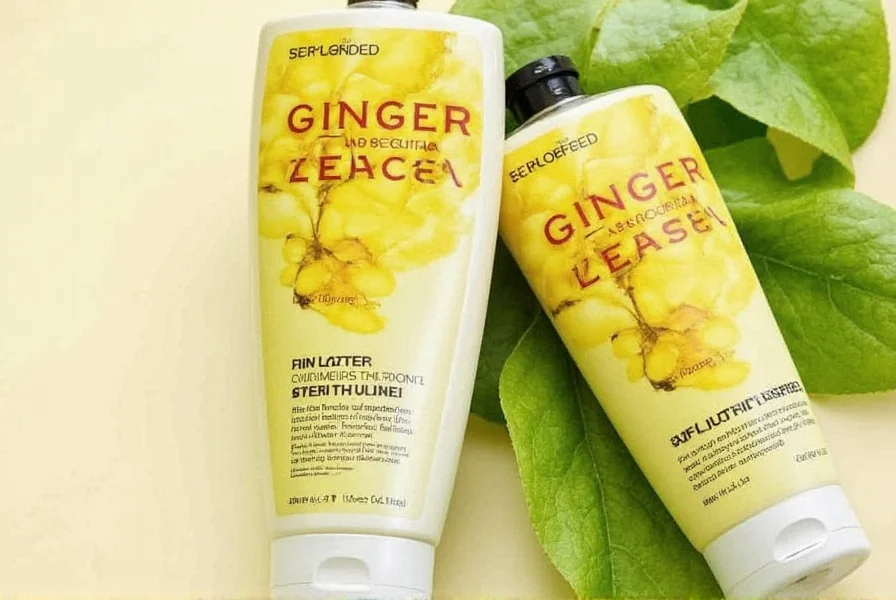Many people search for "shampoo ginger plant" wondering if there's a specific variety of ginger used exclusively for hair care. While regular culinary ginger (Zingiber officinale) offers some hair benefits, the plant specifically called shampoo ginger is Zingiber zerumbet, a close relative with unique properties that earned it this distinctive name.
What Exactly Is Shampoo Ginger?
Zingiber zerumbet, native to Southeast Asia, is a perennial herb in the ginger family (Zingiberaceae) that grows up to 6 feet tall in tropical climates. Unlike common ginger, its rhizomes form distinctive cone-shaped clusters that resemble pinecones—hence the alternative name pinecone ginger.
The "shampoo" designation comes from the clear, viscous liquid that exudes from mature rhizomes when cut. Traditional communities in Hawaii, Indonesia, and other Pacific regions have used this natural gel for centuries as a:
- Natural hair cleanser and conditioner
- Scalp treatment for dandruff
- Hair shine enhancer
- Fragrance carrier in traditional hair preparations
Botanical Characteristics of Zingiber zerumbet
| Feature | Description |
|---|---|
| Scientific Name | Zingiber zerumbet |
| Common Names | Shampoo ginger, pinecone ginger, bitter ginger, wild ginger |
| Rhizome Appearance | Cone-shaped clusters (resembling pinecones), green when young turning red as they mature |
| Natural Habitat | Tropical regions of Southeast Asia, naturalized throughout Pacific Islands |
| Active Compounds | Zerumbone, gingerols, shogaols, volatile oils |
Why Is It Called Shampoo Ginger?
The name comes directly from traditional usage. When the mature rhizome is cut or crushed, it releases a clear, slippery liquid with mild cleansing properties. Pacific Islanders, particularly in Hawaii where it's known as awapuhi, would collect this gel and apply it to their hair before rinsing.
This natural shampoo alternative provided several benefits:
- Gentle cleansing without stripping natural oils
- Natural conditioning that enhanced shine
- Pleasant, subtle fragrance
- Scalp soothing properties
Scientific Basis for Hair Benefits
Modern research supports some traditional claims about shampoo ginger's hair benefits. Studies have identified several properties relevant to hair care:
- Antimicrobial effects: The compound zerumbone shows activity against microbes that can cause scalp infections
- Anti-inflammatory properties: May help soothe irritated scalps and reduce dandruff
- Natural conditioning: The gel's mucilaginous texture provides slip and shine without heavy residues
- Fragrance retention: The rhizome's natural oils help carry and retain scents in hair
Unlike commercial shampoos that often contain sulfates which can strip hair of natural oils, shampoo ginger offers a gentler cleansing alternative that maintains the hair's natural moisture balance—making it particularly suitable for curly, coiled, or damaged hair types.
Shampoo Ginger vs. Culinary Ginger
While both belong to the Zingiber genus, there are important differences between shampoo ginger (Zingiber zerumbet) and common culinary ginger (Zingiber officinale) relevant to hair care:
- Rhizome structure: Shampoo ginger forms distinctive cone-shaped clusters, while culinary ginger has branched, knobby rhizomes
- Natural gel production: Only shampoo ginger produces the abundant clear gel used traditionally as shampoo
- Flavor profile: Shampoo ginger is much more bitter and less palatable than culinary ginger
- Active compounds: Shampoo ginger contains higher concentrations of zerumbone, while culinary ginger has more gingerols
How to Use Shampoo Ginger for Hair Care
If you're interested in trying this traditional hair treatment, here's how to properly use fresh shampoo ginger:
- Harvest mature rhizomes (typically 8-12 months after planting)
- Cut open the red-tinged cones to access the gel inside
- Apply the clear gel directly to wet hair and scalp
- Gently massage into scalp and work through hair
- Leave on for 5-10 minutes
- Rinse thoroughly with warm water
For best results, use 1-2 times weekly. Many users report improved shine, reduced frizz, and a healthier scalp after consistent use. The natural fragrance typically lasts through several washes.

Growing Shampoo Ginger
Zingiber zerumbet thrives in USDA zones 8-11 but can be grown in containers in cooler climates. Key growing requirements include:
- Partial shade to full sun (morning sun with afternoon shade is ideal)
- Rich, well-draining soil with high organic matter
- Consistent moisture (but not waterlogged conditions)
- Warm temperatures (minimum 50°F/10°C)
- High humidity
Plants typically reach maturity in 8-12 months. The rhizomes develop their characteristic pinecone shape and produce the maximum gel when fully mature. In tropical climates, shampoo ginger can become somewhat invasive, so container growing is recommended in many regions.
Safety Considerations
While generally safe for topical use, consider these precautions:
- Perform a patch test before full application to check for sensitivity
- Avoid contact with eyes (can cause irritation)
- Use fresh gel within 24 hours as it degrades quickly
- Consult a healthcare provider if you have sensitive skin conditions
- Not recommended for internal consumption in significant quantities
Modern Applications
Today, shampoo ginger extract appears in various natural hair care products, particularly those focused on:
- Sulfate-free shampoo formulations
- Curl-enhancing products
- Scalp treatments for dandruff
- Natural fragrance carriers
- Products targeting hair shine and manageability
When shopping for commercial products containing shampoo ginger, look for Zingiber zerumbet extract or shampoo ginger extract in the ingredients list. Be aware that many products may simply contain regular ginger (Zingiber officinale) instead of the specific shampoo ginger variety.
Conclusion
The shampoo ginger plant (Zingiber zerumbet) is a fascinating botanical with legitimate traditional uses in hair care. While it won't replace your conventional shampoo for deep cleansing, its natural gel offers valuable conditioning and scalp-soothing benefits that have stood the test of time in Pacific Island cultures. As interest in natural hair care solutions grows, this unique ginger variety continues to gain recognition for its specific hair-enhancing properties distinct from regular culinary ginger.










 浙公网安备
33010002000092号
浙公网安备
33010002000092号 浙B2-20120091-4
浙B2-20120091-4